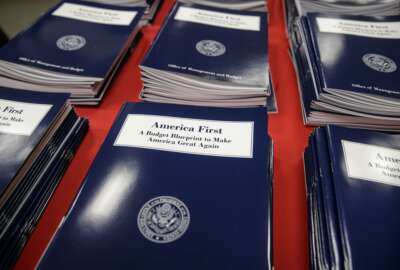
Federal hiring freeze: Birth control or Band-Aid?
We're 50-some days into the federal hiring freeze, so how's it going where you are? Senior Correspondent Mike Causey says this freeze, like those imposed in the...
Fifty-something days since President Donald J. Trump pulled the federal hiring plug, the freeze looks more like a Swiss-cheese target on a firing range than a sure-fire device to slow the creation of new bureaucrats.
In a sense, the freeze is a learning experience for new presidents and new administrations, as Presidents Jimmy Carter and Ronald Reagan found out. But it may be more of a shock to this business/military-oriented top Cabinet-level Trump team that is used to orders being carried out, period.
In fact, only hours after the most recent governmentwide hiring freeze was announced, dozens of operations and agencies had been exempted. Many that weren’t sought (or are seeking) and got authority to keep hiring to fill “critical” vacancies.
Slapping a freeze on federal hiring is a popular first step for an incoming president whose party has retaken the White House after four-to-eight years in the political wilderness. A freeze sounds good to many taxpayers. And seems to make sense. It gives the new team time to get their own people (politicals) in place, to start learning the missions of their respective agencies. And it plays well with much of the public. Anything that slows or stops the addition of more bureaucrats for life is a good thing, right?
While its PR potential is good, the actual freezing of federal hiring is problematic at best. Departments, agencies and programs get their freeze orders, salute, promise to tighten their belts then immediately seek exemption from the freeze. Or look for ways around it. Federal unions express outrage — especially if the person dialing down the thermostat is a Republican. But more often than not life goes on.
Most of the government — like operations of the departments of Defense, Homeland Security, Veterans Affairs and law enforcement — are often exempted from day one of the freeze. Or shortly thereafter. After exempting major Defense functions from the freeze, the Army last week set up a “streamlined process to approve exemptions” from the freeze. Federal News Radio reported that (as of March 15) it had approved about 20,000 civilian hires, “up from just 5,500 waivers” it issued the week before. Other services are thawing the few remaining parts of their operations that were actually under the freeze.
Meantime, the government is desperately seeking to hire 15,000 new border patrol officers to make good on a promise candidate Donald Trump made to round up and deport illegal immigrants and to build and patrol a wall on the U.S.-Mexico border. Although all other federal and postal unions supported former Secretary of State Hillary Clinton, the big National Border Patrol Council of the American Federation of Government Employees endorsed Trump and urged its members to vote for him even as their Washington-based national leaders denounced his candidacy.
If past hiring freezes tell us anything, it is that this one — when it ends — may wind up with only a few agencies that didn’t get some kind authority to hire people during the freeze. Meantime, we’ve got our eye on one of my favorite small agencies that probably didn’t ask for — or get — any exemption to continue hiring. That would be the Marine Mammal Commission, with a total staff of 20-something people.
Nearly Useless Factoid
A total of 37 different animals have been featured in Barnum’s Animals Crackers since 1903.
Source: Wikipedia
Copyright © 2025 Federal News Network. All rights reserved. This website is not intended for users located within the European Economic Area.
Mike Causey is senior correspondent for Federal News Network and writes his daily Federal Report column on federal employees’ pay, benefits and retirement.
Follow @mcauseyWFED
Related Stories






